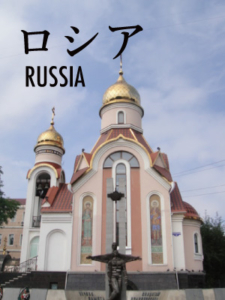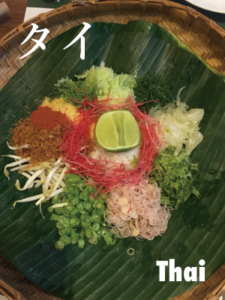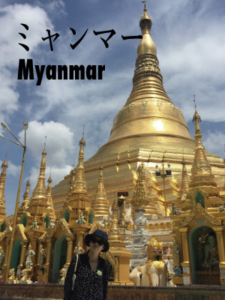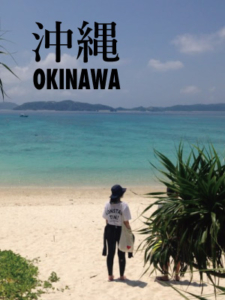Hakama Pants | Discover Japanese Bingo Fushiori

Hakama pants inspired from the asian casual pants, made of Japan’s traditional “Bingo Fushiori” fabric.
There are many traditional textiles and dyes used to make Japanese kimonos, but unfortunately these days, they are only worn on very special occasions. Wearing a kimono also requires a specific technique. That is why we created pants that are easy to put on and incorporated a cool Asian style, using the traditional Japanese fabric, Bingo Fushiori.













Bingo Kasuri is one of Japan’s three major Kasuri fabrics, along with Kurume Kasuri and Iyo Kasuri. It has been produced in the area of Shinichi, Fukuyama City, Hiroshima Prefecture since the Edo period. There used to be many weavers and mass production, but now only two manufacturers are left that continue to machine weave, preserving the traditional manufacturing method that starts with the dyeing process.

Japanese colours dyed with natural indigo, persimmon tannin, and ink
The Bingo Fushiori production process begins with dyeing the boiled raw silk. Natural indigo from Tokushima, persimmon tannin from Hiroshima, and ink are used to make the necessary dyes. The colour is greatly influenced by the weather as the silk is dried in the sun to blend the colour. The production speed can also be influenced as waiting for favourable weather can be necessary.
Slowly and carefully woven, soft cotton texture
Threads are woven using an old-fashioned shuttle loom from the 1950s. By weaving slowly, it makes the fabric’s texture soft and airy. However, because the weaving speed is slow, one machine can only weave one roll (approximately 30m) per day. It is a very valuable fabric with a very limited produced quantity due to the many processes that are handled by hand.

Taking shape in Saitama’s sewing factory
The pants are sewn at a factory with high-technology equipment, that also handles outdoor garments and clothes for domestic high-end brands. First a pattern is created with CAD, the fabric is cut, ironed, and finally it is carefully sewn.


Traditional Japanese pattern “Kasuri”
Bingo Fushiori, which is highly praised overseas, now has a new Kasuri design added, a motif quite liked overseas! It is a fabric using the Kasuri technique that makes the random lattice pattern fade and disappear. This pattern is rather easy to match with anything, making it easy to wear! It has a modern atmosphere that revamps the classic pattern.


It is a modern kasuri pattern with a dyeing effect applied at random on the stripes with a tie-and-dye technique. A completely new design born from the tradition of Bingo Kasuri techniques.

▲ADD ON Bingo Fushiori Patchwork T-shirt 4,800 yen.
Patchwork T-shirt made from leftover Bingo Fushiori fabric. This T-shirt is 100% high-quality cotton and 100% Made in Japan, with a soft texture. By using leftover cuts of fabric, we eliminate fabric waste. Size: M/L/XL

▲New feature: Now with pockets!

The simplest expression of the Bingo Fushiori, gentle and warm.
The fabric’s small knots gives it a slight unevenness, so it fits comfortably against the skin and has a gentle texture.

A slightly thick striped pattern with knots. Slub yarn is used for the stripes, giving it a more three-dimensional look than regular striped fabric. The fabric has a soft texture without being stiff, and the ruggedness unique to slub feels good on the skin.

About the indigo dyeing
Indigo dye, which is used all over the world, was also widely loved in Japan. In the Edo period, along with the mass production of cotton, kimonos, noren, and everything else were dyed in indigo blue, also known as Japan blue. Since the Meiji period, people have traded their kimono for more western style clothes, synthetic dyes have been imported, and indigo dyeing has gone out of fashion. In Japanese indigo dyeing, dyer’s knotweed is fermented, and the dye is made in a process called “aidate”.
For Bingo Fushiori as well, the dye is made by combining Tokushima’s natural dyer’s knotweed and indigo dye, persimmon tannin, and ink. The unique smell of indigo remains in the product, but you can enjoy the texture of natural indigo. (The smell of indigo disappears after washing)





▲Model 1: Height 185cm/73in, Waist 100cm/39in, wearing size: LT (Waist 110cm/43in, Length 92cm/36in). Waist + 10 cm/4in is just the right size.

▲Model 2: Height 157cm/62in, Waist 85cm/33in, wearing size: M (Waist 100cm/39in, Length 87cm/34in). Waist + 10 cm/4in is just the right size.

▲It will shrink after washing. The notation is the size after washing.

▲The waist size can be adjusted with rubber bands and a string. The design does not constrict the body, making it perfect for those who are undergoing medical treatment.

▲Easy to put on and take off.

▲Keep the hem clean and dry even when walking on the beach or in the river just by tucking it in!

A trip to Myanmar in 2017

It is said that 135 ethnic groups live here, wearing the traditional longyi.

That same year, Tokyo Pouch was born, looking to make pouches with fabrics from all around the world. While looking for fabric for pouches in Myanmar, I bought skirt-like pants at the market, and they were amazing to travel in! I continued using them even after returning to Japan, but they are not sold here. And so I thought “let’s make it!” and I started making women’s pants with Japanese fabrics.
The Tokyo Pouches were made in my own atelier, but pants are a little more difficult to make here. Just when I thought the production hurdles were a bit high, I was able to ask a former school friend’s sewing company. With 2 sewing factories in Saitama and Iwate, they accepted my request with a lot of flexibility.

▲ In 2021, with a tiger motif fabric used for Aloha shirts
After the start of sales, I just spent more time at home due to the coronavirus, and, like many other people, I needed relaxation wear other than nightwear. These pants originally meant for women also started receiving some love from male users. And so I thought I should start making models that are easier to wear for men as well! Like this, I started researching indigo dyed fabrics. Bansyo Co., Ltd. in Okayama was proposing wonderful fabrics.

A lot of traditional Bingo Fushiori is used, and there are many patterns available. I ordered a sample book, selected the fabrics, had samples made and proceeded with the preparations. Only 15 pieces can be made from 1 roll (30 metres) to make good use of the fabric. And in order not to waste any valuable fabric, we only start the production of the fabric after receiving an order for pants!
I started this Kickstarter project with the hope that not only people in Japan but also people overseas could enjoy these pants and I hope a lot of you will!

Sadly, a military coup happened in Myanmar during the 2021 pants launch. For this reason, I donate a portion of the sales to human rights groups and charities, hoping that Myanmar will have peaceful days.
Part of the profit in 2021 was donated to the activities of Myanmar human rights activist Wei Wei Nu through the general incorporated association Earth Company.







